No products in the basket.
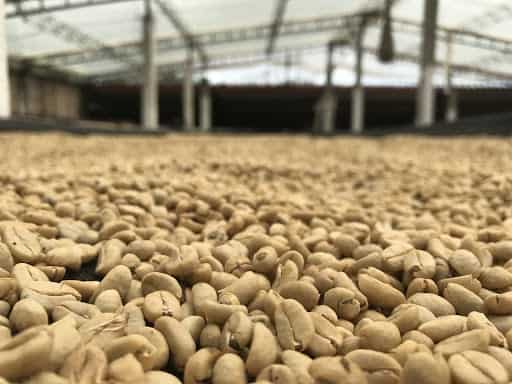
Colombia
Our Neighbourhood
Part one’s here if you’ve not read it.
After a quick breakfast at the hotel, we were back on the road up to the municipality of Cajibio, and particularly to two other farms: Finca Valtimore, and Finca Los Naranjos.
Finca Valtimore is owned and farmed by Señor Luigi Ledezma, and it’s also a big farm. He has 65,000 coffee trees, of which about 40,000 are in production, spread over 14 hectares. Situated at 1,800 metres, the farm sprawls down a hillside to the Rio (river) Piendamo with Colombia and Castillo planted in rows across the hill.
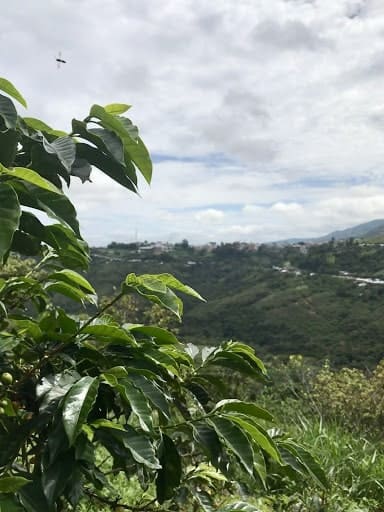
Cajibo hillside

Parabolic drying beds
Señor Ledezma has been running the farm for 22 years and has built up an impressively sized benficio, with a twin de-pulper, several rinsing tanks, and a huge solar dryer – this time with an angled vented roof rather than a parabolic. This helps airflow throughout the dryer, as when it gets really warm, the hot air escapes through the roof instead of being trapped in the dryer. A more constant temperature dries the coffee more evenly, and results in better quality, but to ensure that even in colder, or wet weather the processing can continue, Señor Luigi has a mechanical dyer on site, which will complete the drying.
Whilst we were in the plantations, we saw three stages of coffee growing on individual branches, something we’ve never seen in Africa or Brazil, where there is one harvest per year. Colombia has two, the main harvest, and the mitaca harvest, and everything is further complicated by there being some variation between the various regions. In Cauca, there’s even variation between the various sub-regions like Piendamo, Cajibio, and La Florida, so it’s impossible to specify exactly when the harvest begins.
Whilst out in the fields, Luigi was keen to demonstrate the use of a brix meter to us. These nifty little bits of kit will tell the farmer the amounts of sugar in the cherry, and peak sugars are one of the indicators of the best time to pick the coffee, along with the colour of the cherry.
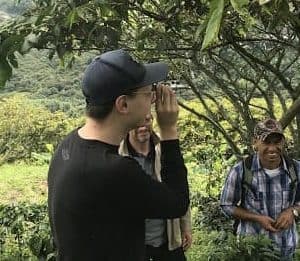
Checking the sugar
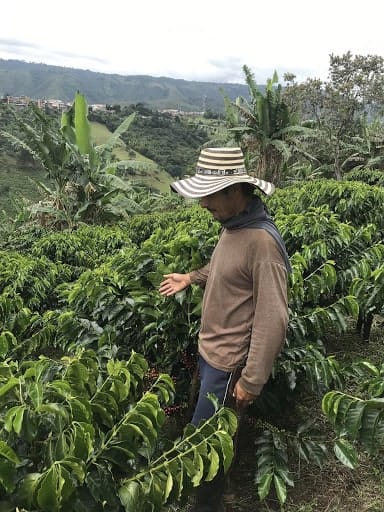
Jaime
Different varieties have been found to have different optimum picking times, so the challenge for these farmers is to get the coffee picked at the optimum times for each varietal, and then to get it processed as quickly, cleanly and efficiently as possible, whilst making sure that all the necessary stages take place. Having a beneficio on site means they can supervise and/or run the processes themselves, which leads to greater control, greater accuracy, and almost always better results in terms of quality. Luigi’s set up at Valtimore means he is control of a great deal of the processes involved, and can effectively marshall his team, as well as some of the itinerant pickers that travels from farm to farm during harvest.
After hanging out most of the morning, we stopped in the town of Cajibio for a traditional lunch of soup – more like a big bowl of meaty broth with chicken, corn and a load of other root veg thrown in, with as much chilli thrown in as you wish. Resisting the urge to take a siesta after the huge carb-fest, we headed for a much smaller farm, Finca Los Naranjos, which is owned and run by Señor Jaime Guzman.
Jaime grew up in Huila, another of the great Colombian coffee regions, but due to a family issue, he made the move to Cauca, and now farms a three hectare site on a picturesque hillside, named for the orange trees that scatter the property. The farm is planted with Castillo, Colombia and Bourbon varietals which he processes on site in a small beneficio situated next to the house. He de-pulps, and then leaves the cherry to dry ferment, before several stages of washing and rinsing. After the rinsing, the green coffee, still in its protective paper layer – called parchment – is transferred to a rooftop drying area over which Jaime had constructed a huge sliding roof. When the weather is sunny, the roof slides back to open up the drying area, but at the first sign of rain, or if the temperature gets too high, the entire structure rolls back over the drying area to protect it from the wet weather.
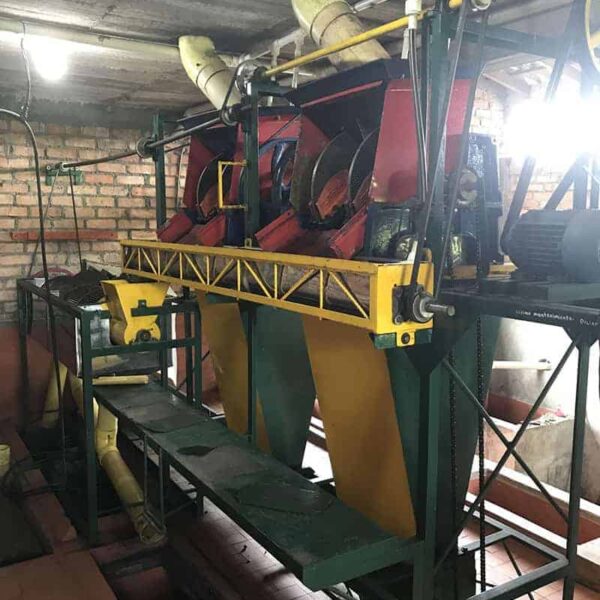
The depulper
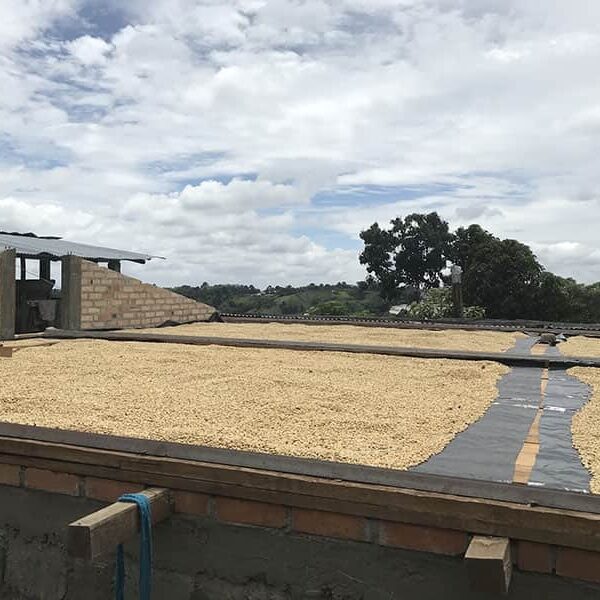
Rooftop drying beds
After travelling back to the Banexport office, we hung out with some of the QC team, and then cupped (tasted) our way through 16 samples of coffee from the surrounding sub-regions of Cauca. These were all blends of coffees from a few farms, termed Gran Galopes or Regionals by our partners at Cafe Imports. Their stratified buying approach makes it really easy to work with, and we use a similar model. Some of the GGs and Regionals will be used for blending purposes for our house espresso, Espresso Yourself, as well as some custom blends for wholesale customers, whereas the Regional and Microlot programme coffees will appear as single origin coffees on the website. Take a look.
We tasted coffees from around the towns of Cajibio & Piendamo, including areas such as Uvales, La Florida, Melchio, El Tunel & El Carmelo. The one that jumped out was one from the Argelia group of farmers in Meson Alto, a region that’s about a six hour drive from Popayan, so wasn’t really on our list to visit.
Cupping is a daft word to describe a fairly serious process. It’s a coffee industry standard way of assessing coffee, which requires the ‘cupper’ to assess the coffee on ten different parameters:
Added together, these scores form a composite rating out of 100. Sixteen samples equals 160 assessments, so it takes a couple hours to get through them all, compare notes and scores, and register interest in the ones that are preferred. Every coffee is assessed ‘blind’, so the cupper has no idea of the provenance and details of the coffee, allowing them to be judged on merit alone.
With a palate full of coffee, it was time to change up the tastes, get some drinks (not coffee, but beers and aguardiente, and certainly not with ten separate assessments on each) with some of the Banexport crew, write up some brief notes, and then go look round the centre of Popayán and get some dinner. The city comes alive at night, with street corners filled with people everywhere, conversations, food smells and salsa music emanating from bars and restaurants. There’s news to catch up on, business to discuss, family & friends to see, church to attend, and company to enjoy.